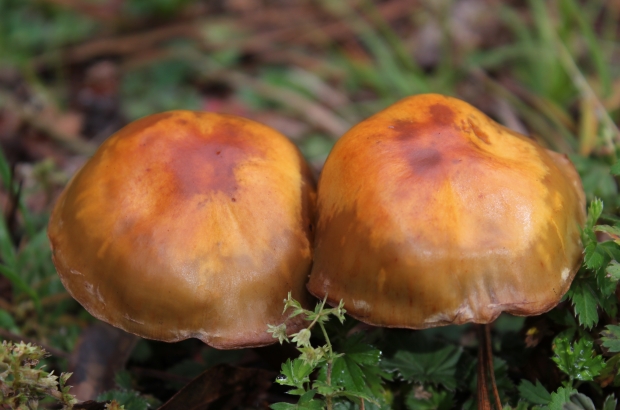- Daily & Weekly newsletters
- Buy & download The Bulletin
- Comment on our articles
October’s bounty: A guide to autumn picking and foraging in Belgium
Autumn is the time of plenty, when trees are drooping heavily with the last fruits of the year and thick-skinned gourds lie swollen on the ground. The season is so associated with agricultural practices of harvest-time that the Dutch word for autumn is herfst, literally “harvest”.
The harvest tradition is so deeply ingrained in our collective unconscious that even stalwart city dwellers get a hankering this time of year to run to the fields and reap the bounty of summer’s labour. When the urge arises, there are several places in Belgium where you go to pick, glean and forage.
Picking
Belgium’s main fruit-growing region is Haspengouw in Limburg. There, you’ll find one farm after the next growing apples and pears this time of year. Many of these working farms will have specific days in October when they will invite visitors to come and self-harvest their fruit, either paying by the kilo or by the crate.
In Wallonia, the Culture Fruitiere Du Point Du Jour, just west of Nivelles, to the south of Brussels, also welcomes visitors to come pick apples. Les Fruits du Verger in La Bruyère, in Namur, specialises specifically in apples and pears, which you can come pick from tidy rows of trees. For both, you should call ahead of time and confirm that it’s okay if you come.
However, perhaps the true symbol of autumn is the orange pumpkin. Whether to carve or to eat, a trip to the pumpkin patch can be fun for the whole family. Head to La Potironnerie in Braine-l’Alleud for a wide array of pumpkins and gourds in all their oddly shaped glory.
Of course, there is more to fall apples and pumpkins. The raspberry farm in Redu, for example, is still open in October for raspberry and blackberry picking by appointment. For a wider assortment of fall fruits and vegetables closer to Brussels, Marie’s Garden in Overijse is always worth a visit on a sunny weekend or weekday afternoon.
Foraging
Moving off the farm and into the wild, in fall, the forests are riddled with delectable pickings just waiting for the knowledgeable eye to find them, from walnuts and beechnuts to thickets of redcurrants. But among the most popular things to forage in Belgium are wild mushrooms.
Autumn is the season to grab a basket and head into the woods for some mushroom hunting. All over Belgium you will find a wide assortment of edible mushrooms growing in damp corners, including chanterelles, boletes, morels, and “hens of the woods”.
Mushroom hunting can be done with as little as a wicker basket, a good photo book on mushroom characteristics and a nice stroll through the woods. It’s an activity meant to be done in the great outdoors, not only for the bucolic walks, but because fungi easily absorb pollution from the air around them, so the fresher the air, the healthier the mushroom.
If you are more of a social learner or nervous about picking your own ‘shrooms, there are plenty of walks, workshops and events organised this month that will teach you the basics of fungi foraging, especially if you speak some French.
There is even the Fête des Champignons (the Festival of Mushrooms) coming up on 18 and 19 October in Louvain-la-Neuve, which will offer introductory guided tours to the world of mushroom hunting, along with talks and workshops on all things fungi-related, from growing to gathering to gastronomy.
Of course, one should always be careful with mushrooms, as they can be as poisonous as they can be delicious (there are even some hallucinogenic mushrooms that crop up in Belgium). Unless you’re highly experienced in mushroom foraging, any fungi you gather should be verified by an expert to ensure its edibility.

















